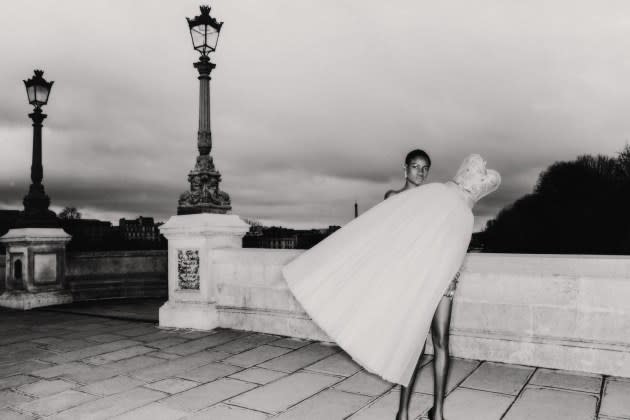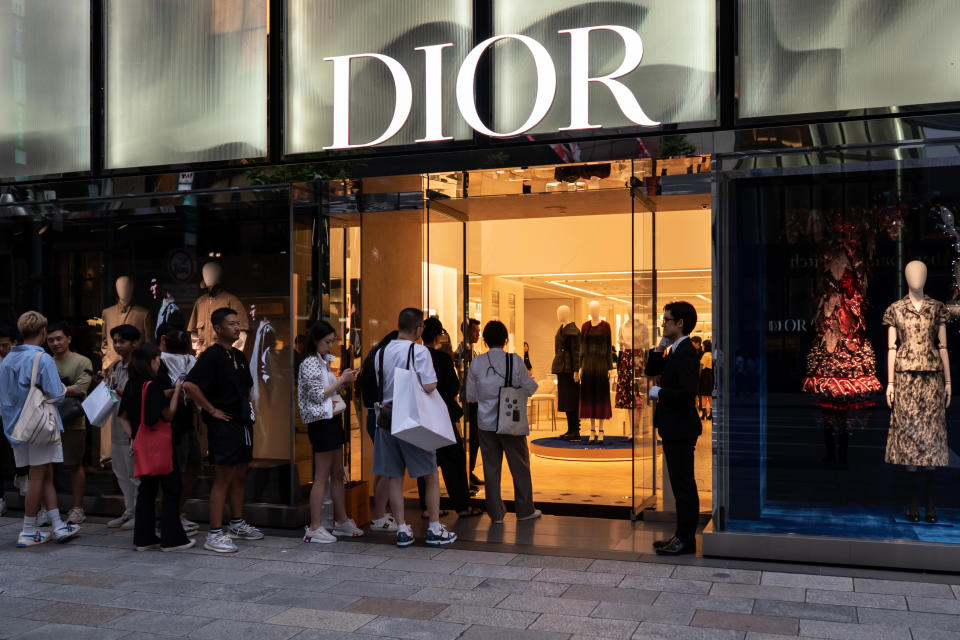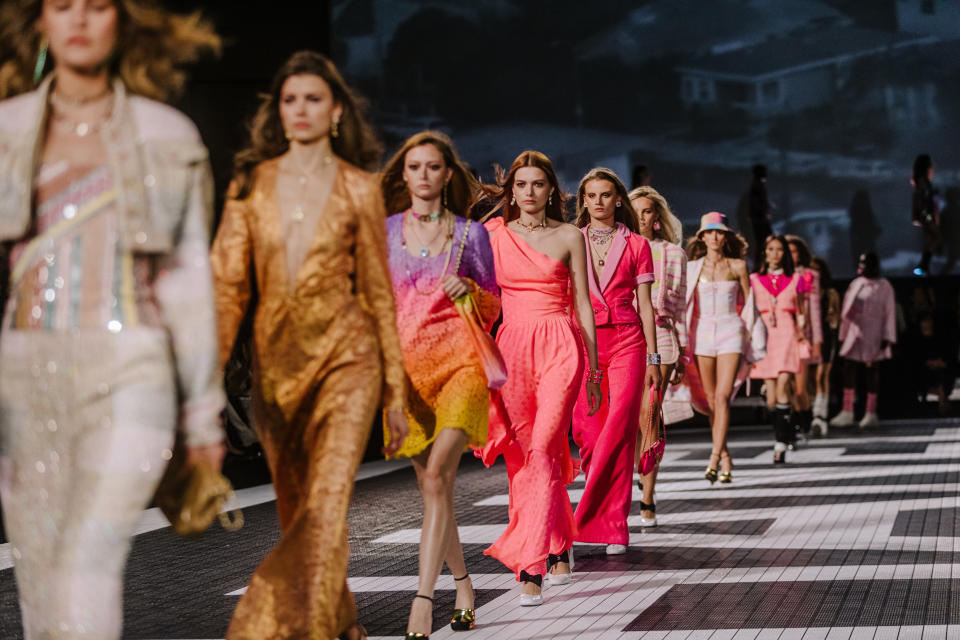What to Watch: More Reality Checks in Store for European Luxury Brands

Grin and bear it.
That’s what luxury brands and retailers are preparing to do over the next six to 12 months as aspirational consumers worldwide continue to pull back on spending in what remains an uncertain macro-economic climate.
More from WWD
With wars grinding ahead in Ukraine and the Middle East, and with the U.S. and the U.K. headed to the polls later this year, consumers are — understandably — anxious, and ever more cautious about spending.
With interest rates still high and questions swirling about the Chinese consumer’s appetite for luxury, it’s no wonder that analysts, brand leaders, and industry figures are all conservative in their outlook for 2024.
They believe the short term will be tough and that better times lie ahead, but no one can pinpoint when.
More in What to Watch: Retail
Retailers Guarded, Prudent and Primed
Luxury Brands Tackle Shortage of Sales Associates
Can Department Stores Regain Relevance?
Fifth and Madison Avenues’ Retail Revival
Saks/Neiman’s: Amid Market Share Battles, Takeover Talk Persists
Top L.A. Store Locations Getting Harder to Snag
More Reality Checks in Store for European Luxury Brands
The Age of the Gilded Customer Experience
Barclays said it’s keeping a “cautious view,” and believes the normalization of the luxury market should “fully materialize” in 2024. It has also warned that some brands could experience “negative growth” due to the slowdown in consumption and tough comparisons with the first half of 2023.
HSBC gave its 2024 outlook the cheery title of “Goodbye Stellar Growth” and said the normalization in the sector could stretch into 2025.
“Following three years (2021 to 2023) of exceptional growth linked to revenge buying in almost all regions after the reopening post COVID-19, we are now expecting a return to normalized growth in 2024 and 2025,” the bank wrote.

HSBC said it is expecting 8 percent average growth for the companies it covers for 2024 and 2025, compared with 35 percent in 2021; 15 percent in 2022, and 11 percent in 2023.
Altagamma and Bain & Co. said in a joint report they are anticipating “softening personal luxury goods performance in 2024,” with low-to-midsingle-digit growth over 2023, based on “fragile consumer confidence, macroeconomic tensions in China, and sparse signs of recovery in the U.S.”
The report also argued that 2024 will be “a defining moment for brands, and the winners will separate themselves through resilience, relevance, and renewal — the basics of the new value-centered” luxury equation.
“There are significant challenges for all participants in this market,” said Mytheresa chief executive officer Michael Kliger, adding the current slowdown in luxury consumption seems far worse because of the sector’s long boom years and the post-pandemic shopping craze.
Kliger believes a return to growth will depend on several dynamics.
“We have one customer segment that is not actively buying at the moment — the aspirational customer. To bring them back we’ll need a more positive economic outlook which could be in the coming year — or not,” said Kliger.
“But we’ll also need to bring them back with more accessible price points — not by lowering price points, but by bringing in new entry price points,” he added.
Analysts agree, believing brands can no longer rely on price increases to boost their top and bottom lines and will need to figure out how to bolster sales by selling more entry-price products.
Overall, analysts believe it will be a lackluster year for the big brands, with organic growth projections ranging between 4 percent and 8 percent, and sales weighted toward the second half of 2024.
A large chunk of that growth will come from Asian markets, while demand in the U.S. and Europe is expected to be flat. The outlook for Chinese demand is uncertain.

Citing Global Blue data, Bernstein pointed out that Chinese international tourist spend has slowly been returning to 2019 levels. “However, is the money being spent on luxury products? Or luxury hotels and experiences? If it’s on the latter two, the luxury recovery will be delayed,” the bank said.
In its outlook, Jefferies said Chinese economic stimulus measures have had limited impact so far on consumption.
“Feedback from the ground suggests … a reluctance to spend, and perhaps an overall softening in demand so far in [the fourth quarter],” the bank said.
Jefferies added that consumers are also taking more time to consider their purchases and placing an ever greater importance on value. There is a certain Chinese consumer, it said, “who seems to be approaching luxury purchases with a greater need for deliberation and consideration.”
The bank added that growth in spend among Chinese travelers is “unlikely to provide much of a lift in 2024. Long haul spend by Chinese travelers into Europe and North America is unlikely to grow considerably, in many executives’ minds, given the much higher cost of travel, a clearly reduced price saving, and markedly upgraded assortments in China.”
In November, Barclays warned that a weak macro environment in mainland China “could affect willingness to travel, and offshore spending.”
In December, Moody’s cut its outlook on the Chinese government’s credit rating to negative from stable, citing lower medium-term economic growth prospects and property sector challenges, which should further dampen consumers’ appetite.
Jonathan Siboni, founder and CEO of Luxurynsight, which provides luxury, fashion and beauty brands with data-driven insights, is taking a brighter view of the future in China, and worldwide. He said the luxury market showdown is normal and should not be cause for panic.
“This normalization has to be put in context of a very high growth period which was exceptional. Right now, the world is in trouble. We’re in the middle of a war in Ukraine, a war in the Middle East, upcoming elections in America, and China economic tension.
“And still, luxury is resilient. It’s not resilient at 20 percent growth rates — that doesn’t make sense. Instead, it’s resilient at 6 to 8 percent growth rates. Let’s not cry” about that, Siboni said.
He also pointed out that China lifted lockdown restrictions less than a year ago, and it will take time for people to get used to traveling — and spending — once again.

Kliger is also taking a longer view, and believes the industry is quickly adjusting to the new normal. In the last Mytheresa earnings call, the CEO said he expects promotional intensity in the market to decrease with the spring/summer 2024 season because stock levels will be lower.
“It will be the first season bought by retailers and produced by brands under the clear understanding that there is a slowdown,” said Kliger. “There will be more of a balance between supply and demand. It will mean a better top line and a better margin, and that has been baked into our guidance” for Mytheresa’s second half, which runs from January to June.
As reported, Mytheresa confirmed its guidance for the full fiscal year, which ends June 30. Gross merchandise value and net sales growth will be in the range of 8 to 13 percent, while adjusted earnings before interest, taxes, depreciation and amortization margin will fall between 3 to 5 percent.
As the luxury market continues to readjust, there will also be less competition in the luxury retail arena, with Farfetch and Matches under new ownership, and the futures of Browns and Net-a-porter uncertain.
“We are in a phase and we need to get through it together, as an industry. This is a period of normalization, but I think the fundamental trends that drive luxury and online luxury are fully in place,” Kliger said.
Best of WWD


